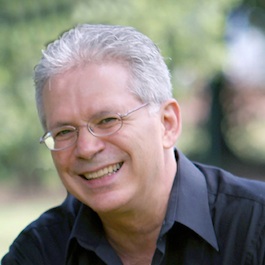Article originally published in Dutch by blokfluitist jaargang 3, nr. 3 (september 2011) and reprinted by permission.
Arcangelo Corelli La Follia
Have recorders — will travel!
In December of 1998 I was asked to do a series of concerts and master classes in Israel. On the morning of my first performance I met for the first time with harpsichordist, Evgeny Lisogursky, who was to accompany me thoughout my stay in Israel.
The only language we had in common was our music; we had time for only the briefest of rehearsals before arriving at the hall just before the concert without having been able to read through all of the pieces on the program that included not only Corelli’s La Follia, but also Handel’s B minor sonata (HWV 367b), Telemann’s B flat major Triosonata (TWV 42:B4) and a Bach Sonata. La Follia was one of the pieces that we hadn’t been able to read all the way through before the performance but Evgeny and I played together as if we had been friends and colleagues for years.
After the recital I was approached by a gentleman who introduced himself as the French ambassador to Israel who, after complimenting me, started wagging his finger and, with increasing heat, told me that he’d known Dr. Carl Dolmetsch (1911-1997) personally and that he had heard him play Corelli’s Follia and that I should be very careful as he felt that I had “copied” Dr. Carl’s interpretation of La Follia. I smilingly thanked him for his keen observation and told him that I found his words very interesting in that, although I’d never heard Dr. Carl play Corelli’s Follia, that I did have a possible explanation for his comment in that the basis for my interpretation of La Follia was from my lessons with [French harpsichordist/Early Music guru] Antoine Geoffroy-Dechaume (1905-2000) who, like Dr. Carl Dolmetsch, was a student of Dr. Carl’s father, Arnold Dolmetsch (1858-1940).
When I listen to colleagues or to students play La Follia I always try to keep an open mind as there are many different possible ways of phrasing. I personally prefer the “building block” model for this piece. You know the child’s toy that has a small box that fits in a bigger box that fits in a bigger box again? I find that most of Corelli’s variations fit this model perfectly if you consider each “box” as a paired subgroup, a yin and yang, if you wish. Measure 1 is yin to measure 2’s yang; measures 1 and 2 together are themselves a yin to measures 3 and 4’s yang; similarly measures 1-4 and 5-8, measures 1-8 and 9-16. Some of the variations are also written in pairs. The deviations from this symmetry are of course as important as the symmetry itself and are the reason why each time I teach or practice this piece I find something new in it.
Of all of the Baroque compositions for recorder, La Follia is certainly one of the most taxing for instrument and performer alike. It requires an instrument that is strong in the lower register but agile in the upper register, a balance that recorder builders and players are constantly searching for. La Follia also represents the longest uninterrupted playing there is in our Baroque repertoire, something that can easily cause problems with condensation in both the windway and the thumbhole. Another risk that I am always careful to point out to my students is a too frequent use of over-tonguing because of the piece’s remarkable technical demands in high notes and leaps. My motto for them in this case is “less is more and more is less”.
While writing this article I listened to as many recordings of La Follia as I could find and, of all of them, the one that convinced me the most was by fellow blokfluitist contributor Pieter-Jan Belder whose recording brings to light and corrects several inaccuracies of the 1702 edition including the two repeat marks that are lacking at the end of the third- and fourth-to-last variations. This corresponds to measures 305 and 313, both in the excellent edition by Andrea Bornstein that can be found at www.gardane.info/flautodolce and in the Hans-Martin Linde Schott edition of 1972 that most recorder players of my generation grew up with.
I feel extremely fortunate that I have been able to make a living with the recorder. My professional life has been punctuated by a series of wonderful experiences and coincidences, I have travelled to many parts of the world, encountered many extraordinary people and musicians and Corelli’s La Follia has accompanied me to most of them. I recall performances of La Follia in Australia, England, Israel, Italy, France, Russia, Switzerland and the USA. Have recorders — will travel!
David Bellugi
Florence, Italy - June 20, 2011

David Bellugi has performed extensively as soloist and as conductor/soloist with orchestras over several continents and has premiered various works written for and specifically dedicated to him by a wide range of contemporary composers. He has recorded film music for Italian composer Ennio Morricone and American composer Michael Galasso. Bellugi's discography includes his innovative CD Landscapes, a virtual orchestra of recorders, described as “a technological and musical tour de force”, many recordings made with the Berry Hayward Consort (Paris, France) as well as other innovative and spirited CDs with Italian accordionist Ivano Battiston. David teaches recorder and is chairman of the Early Music Department at the Luigi Cherubini Conservatory of Music in Florence, Italy.
